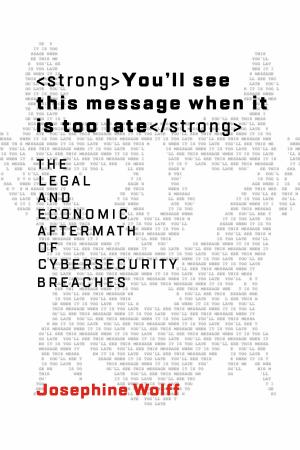Bitcoin: Security and Privacy
Nonfiction, Computers, Networking & Communications, Computer Security, Operating Systems, Application Software| Author: | Lexie M | ISBN: | 9781370230198 |
| Publisher: | Lexie M | Publication: | March 21, 2018 |
| Imprint: | Smashwords Edition | Language: | English |
| Author: | Lexie M |
| ISBN: | 9781370230198 |
| Publisher: | Lexie M |
| Publication: | March 21, 2018 |
| Imprint: | Smashwords Edition |
| Language: | English |
As an electronic currency, Bitcoin is often presented as both anonymous and perfectly transparent. Where the truth really lies depends on how you use it, and using Bitcoin properly requires you to know how it works.
Each Bitcoin transaction is recorded on a distributed global ledger called the Blockchain, which anybody can download after connecting to the Bitcoin network. Bitcoin accounts are not registered with any authority, and users can pseudonymously create as many accounts as they want without cost. Digital signatures can reveal who controls each account, and these signatures may be tracked back to your legal identity.
Bitcoin hacks have received global attention for hacks and thefts. It took the industry years to develop sound practices and properly take security into account. Unlike traditional financial networks which rely on trusted custodians, Bitcoin users can only rely on themselves to secure their assets.
A security conscious approach starts with properly setting up Bitcoin wallets, and backing them up. Depending on the user’s profile, a hardware wallet, paperwallet or mobile app may be appropriate. In theory, Bitcoins can even be ‘carried in your brain.’
But security concerns are not exclusively of technical nature. When buying and selling Bitcoin physical security aspects may need to be taken into account, and trading Bitcoin requires an assessment of counterparty and regulatory risks.
An entirely distinct set of idea are systematic risks. Can Bitcoin collapse on its own? How could someone conspire to destroy Bitcoin?
As an electronic currency, Bitcoin is often presented as both anonymous and perfectly transparent. Where the truth really lies depends on how you use it, and using Bitcoin properly requires you to know how it works.
Each Bitcoin transaction is recorded on a distributed global ledger called the Blockchain, which anybody can download after connecting to the Bitcoin network. Bitcoin accounts are not registered with any authority, and users can pseudonymously create as many accounts as they want without cost. Digital signatures can reveal who controls each account, and these signatures may be tracked back to your legal identity.
Bitcoin hacks have received global attention for hacks and thefts. It took the industry years to develop sound practices and properly take security into account. Unlike traditional financial networks which rely on trusted custodians, Bitcoin users can only rely on themselves to secure their assets.
A security conscious approach starts with properly setting up Bitcoin wallets, and backing them up. Depending on the user’s profile, a hardware wallet, paperwallet or mobile app may be appropriate. In theory, Bitcoins can even be ‘carried in your brain.’
But security concerns are not exclusively of technical nature. When buying and selling Bitcoin physical security aspects may need to be taken into account, and trading Bitcoin requires an assessment of counterparty and regulatory risks.
An entirely distinct set of idea are systematic risks. Can Bitcoin collapse on its own? How could someone conspire to destroy Bitcoin?















